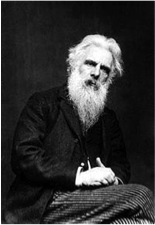Motion
Graphics
During the beginning of this module we were given a group task to undertake. Students were put into small groups of 4/5, and each were given a topic based around an area of design. My group were given the subject matter of 'Motion Graphics'. We discussed and came to a conclusion as to whose going to be exploring what specific part of the topic; therefore I went on defining what motion graphics is- breaking it down into factual points. Explaining the use, how its used, who uses it, little bit of history, discovery of when it was first used and also including great and well known examples.
What is motion graphics? (basic defining points)
1. Motion graphics are generally short pieces of time-based visual media, which combine the languages of film and graphic design.
-Motion graphics are two dimensional in nature, but may create the illusion of three-dimensional movement of design elements.
2. They exist as image, video, film, animation, photography, illustration, and music.
-A video or film of an actual moving object would not be considered motion graphics, unless the footage were integrated with design elements, such as type, shapes, or lines.
-Animation (traditional, or digital) may or may not be considered motion graphics- depending on the type or animated form with significant features, but may still fall into the same category.
�-Images on screens and projections having width and length, but no physical depth and so motion graphics don’t actually have to move, as long as they change in some way over time.
-For example, if type is on screen over an image, the letters may not actually move, but could gradually change colors.
�

3. Motion graphics are often used in interactive multimedia, but are not necessarily interactive. So they may be presented in a linear way in which the viewer has no control over it, E.g. Movies, Television, the titles, credits, subtitles (in this case you cannot change the words or colour on the screen, just view it) and announcements.
�4. Motion is used to add interest, grab attention, or bring life to what may�otherwise be dead, uninteresting content.
�
History of motion graphics
It's hard to pinpoint the exact start of the motion graphics as a discipline. Eadweard Muybridge (1830-1904) revolutionised photography. He is best known for his seminal work Animal Locomotion where he documented both humans and animals in motion.
-During 1877 one of his work that consists of a Horse does not at any one time have his feet off the ground while galloping. While this work is his most famous and has influenced photography, cinema and science for more than a century.
Links to his work:
http://www.youtube.com/watch?v=IEqccPhsqgA
-He developed that projected images in rapid succession onto a screen from photographs printed on a rotating glass disc, producing the illusion of moving pictures.
http://www.youtube.com/watch?feature=player_embedded&v=6Y3cHgELKsU
http://www.youtube.com/watch?NR=1&feature=endscreen&v=1PVdB6LfZec
�
In the early 20th century people such as Viking Eggeling, Oskar Fischinger, Len Lye were experimenting with films that resemble motion graphics.
-Saul Bass' film title sequences in the 50's and 60's took it a step further and into the public eye.
- In the late 70's and 80's people such as Harry Marks and Robert Abel helped bring dynamic computer-generated graphics to broadcast television.
-It's unclear when the term "motion graphics" was first used.
-In 1960, John Whitney started a company called Motion Graphics Inc. and frequently used the term in his work.
-The term rose to prominence in the early 1990's, alongside the advent of the affordable desktop computer.
�
1.Saul Bass is considered to be a pioneer in animated graphic design and his work marks the beginning of motion graphics. He designed the opening credits for:
-Vertigo (1958),
http://www.youtube.com/watch?v=Z5jvQwwHQNY
-Anatomy of a Murder (1959),
http://www.youtube.com/watch?v=nt7keunWkt8
-Psycho (1960) and many more.
http://www.youtube.com/watch?v=Tek8QmKRODw
2. During the 1980’s and 1990’s cable television became popular along with video games and video cassettes creating a source of demand for motion graphics. (it was costly and time consuming in the early yrs.
With the advance of technology though, more and more desktop programs are becoming available and motion graphics have now become cheaper to produce than shooting videos with actors.
�3. Kyle Cooper may be considered as the most well known existing motion graphic designer. He has designed the opening credits for more than 150 movies/TV shows including Seven, Mission Impossible, and The Mummy.
http://www.youtube.com/watch?v=SEZK7mJoPLY&feature=player_embedded
-Opening credits of Se7en (1995). Despite the limited –compared to nowadays- technology available, Kyle Cooper has managed to blend conventional video with motion graphics so well that the audience perceived it as something normal. �
�
Skills required to be involved with MG:
4. A motion graphics animator needs to have several talents. They need have the characteristics and abilities of:
-a graphic designer,
-an animator,
-a programmer
-and a film maker.
Getting the latest version of the best desktop programs will not make you a good motion graphic designer. Tools are only tools; it is what you make of them what counts.
�Motion design studios:
5. Nomint is a high-end motion design studio based in Athens, Greece, specialising in commercial motion design.
-Christos Lefakis, one of the owners of the studio talks about the production tools used in creating motion graphics, underlying that the production is all computerised.
-The concept, he says, might begin from a doodle or a sketch, but it then has to be recreated in the computer. �-The following video contains some parts of an interview given by Christos Lefakis:
http://www.youtube.com/watch?v=a6edR9nJV1M&feature=player_embedded
6. Nomint has won several National, European and Global Awards. Among the awards is the first prize in the European Design Awards in the ‘motion graphics’ category and the first prize- E-Stings competition. ��-E-Stings is an annual competition held by the digital channel E4 and communication magazine Creative Review.
-The participants are asked to create live action or animated videos, maximum 10’’ long, to take place between programmes and commercials.
�



-The video was called ‘E4 Monkey’ and it voted first by voters from all over the world out of several hundreds of participants.
7. Mainframe is an independent motion design studio specialising in motion graphics and animation for commercials, VFX, promos, broadcast branding and sponsorship campaigns.
-Adam Jenns is the founder and managing director of Mainframe.
-They have done projects for many big UK and global companies like Channel 4, MTV, BBC, Disney and VH1.
-Commercials companies prefer them over traditional video producers because the are more cost effective and can spend more time with them. The upturn in motion graphics to producers is the ability to save on the cost of shoots.
-An advert developed by Mainframe studio featuring a combination of motion graphics and conventional video:
http://www.youtube.com/watch?v=CLUAbkRUvVQ&feature=player_embedded
Other examples of Motion Graphics Videos:
-Kanye west: Goodlife, Jessie J: Nobody's Perfect, Rihanna: Rudeboy, Bruno Mars: Just The Way You Are,
Alkalin Trio: Mercy Me.
�
�
Tumblr
Home
"Vault49 is an internationally award-winning design studio with a worldwide practice and reputation for creating world-class illustration, photography, and motion graphics". I've always had an interest in this groups work- and found some motion videos produced by them.
�
Vault49
Check out the tumblr link at the top of page- for the whole groups input.